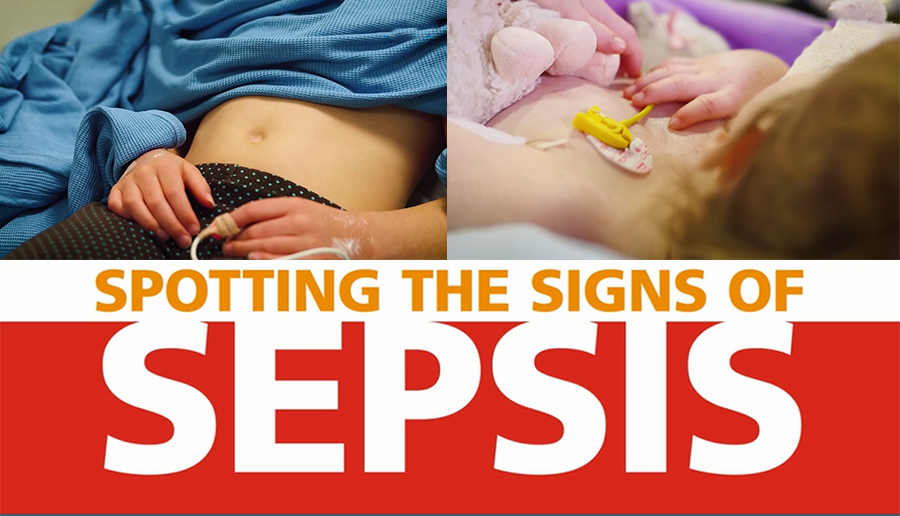Spotting the Signs of Sepsis Safe Discharge Video: Digital Pack

This digital pack has been designed for use by clinicians within Primary Care settings.
Contents
1. Purpose
2. The accompanying leaflet
3. Poster to promote safe discharge
4. Internal communications
5. Social media
The Health Innovation Network (HIN) has worked in partnership with NHS England and the ASK SNIFF Safety Netting Collaborative to produce the “Spotting the Signs of Sepsis” film. The clinical content is based on the Public Health England parental awareness campaign materials that were developed in collaboration with the UK Sepsis Trust and launched in December 2016.
The film is evidence-based, and co-designed with parents, to standardise the safety netting advice clinicians provide for parents of children under five with fever, or suspected infection, being discharged home from Primary Care settings. It is unique in not only informing parents of what signs and symptoms they should be looking out for at home whilst their child is unwell but also showing real life examples of these. It also provides practical tips on caring for children with fever at home.
Sepsis in children is fortunately rare, but is a disease entity that has the potential to develop over time and therefore it can be expected that there will be occasions when a clinician appropriately sends home a child who subsequently develops sepsis. It is therefore vital in these situations for parents to feel empowered with the knowledge and confidence to recognise concerning signs of serious illness in their child, and act on their instincts, to seek medical attention again, as early recognition and treatment of sepsis saves lives.
A study by the RCPCH, published in 2010, showed that only 81% of parents contacting urgent and emergency care services for their child with fever received, or remembered, any safety netting advice. Parents who received this information were less likely to contact medical services again in that illness. The importance of providing safety netting advice to parents at risk of sepsis being discharged home was also highlighted in the NCEPOD report “Just Say Sepsis”.
The film will also be publicly available on the NHS Choices website to raise awareness of the presenting features of sepsis in children under five. This complements the written material already present on the website and will also enable you to signpost parents to the film to watch at home as part of your safety netting practice. An adapted version of the film will also be shown to parents being discharged home from Emergency Departments.
You may already have your own safety netting leaflet for parents, but we have included here the leaflet developed by the UK Sepsis Trust that accompanies the film content that you may wish to you. You can download and print this locally to supplement the information clinicians provide verbally within the Primary Care setting and that is contained within the film. It also contains the link to the film on the NHS Choices website to allow parents to watch at home.
We have designed a poster that you may wish to display in your surgery to prompt clinicians to consider the safety netting advice they provide to parents as part of a safer discharge process.
If you would like hard copies of this poster sent to your practice, please get in contact.
This short summary can be amended and disseminated to those working within your practice (and beyond!) to explain the role of the film.
We have developed a short trailer to be shared via the HIN and NHS Choices’ Facebook pages to promote public awareness of sepsis in children and to encourage parents to watch the full film on the NHS Choices website. Feel free to share!
We will also be using #spotsepsis to spread the word via Twitter, and have been working in partnership with @NHSChoices, @ASKSNIFF and @UKSepsisTrust. A selection of suggested tweets can be found here.
Apply your local social media strategy to manage response rates and level of engagement around the #spotsepsis conversation via your own Twitter account.
For more information on this project and advice or support on how to get involved, please visit our website or email us at HIN.southlondon@nhs.net.